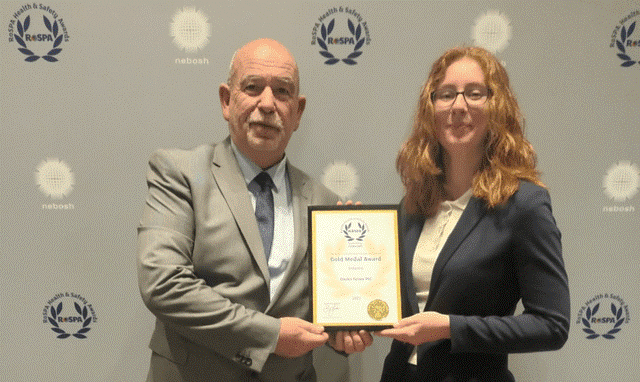 Josh Brazil, Chief Operations Officer, Ocean Insights discusses with ITM magazine how time of arrival, predictive AI technology can greatly benefit the supply chain
Josh Brazil, Chief Operations Officer, Ocean Insights discusses with ITM magazine how time of arrival, predictive AI technology can greatly benefit the supply chain
Josh Brazil joined Ocean Insights in 2017, leading structural and organisational changes as the company began expanding rapidly into the SaaS Logistics Supply Chain Visibility market. He is the Chief Operations Officer and oversees the company’s ongoing operations and procedures.
Headquartered in Germany, Ocean Insights (OI) is a leading ocean supply chain visibility and market intelligence provider that supplies real-time tracking data and market analysis to large shippers from a broad range of industries, including automotive, manufacturing, food & beverage, commodity trading, chemical and freight forwarding.
Ocean Insights pioneered the combining of container liner schedules and carriers’ container tracking information with neutral AIS vessel tracking data. This allows OI’s customers to plan and monitor operations on a level never experienced before.
How is prediction capability in cargo changing the ocean freight industry?
The freight industry has always grappled with a lack of data. The only source of arrival time data traditionally came from the carriers themselves, which was notoriously sparse, missing or sometimes questionable, leaving shippers with a single (sometimes questionable) data set to base their supply chain on.
With the growing capability of big data, historical trends and current real-time data and events are able to be analysed immediately and in some cases make accurate predictions about cargo arrival time. – This essentially gives shippers an extra set of eyes over the shoulder of the carrier’s arrival data, allowing supply chain teams to make informed decisions. Providing real confidence in shipment arrival times is crucial in warehouse stock and production planning, especially in today’s unpredictable climate.
Could you expand on the technology behind your real-time visibility solutions?
Our tracking technology is purely data-driven. That means no extra hardware (an additional supply chain) is required in deploying the service. Ocean Insights Container Track & Trace platform was the first to merge container liner schedules and carriers’ container tracking information with neutral AIS vessel tracking data, taking ocean logistics planning to a whole other level.
You can now even analyse and identify three levels of arrival risk. Predictions are given as a delay warning and/or a most likely arrival date. Where possible, we calculate the most likely time of arrival as well as a confidence interval and then compare it with the carrier’s initial and latest ETAs for that ocean leg. The system works much like a “triage” system by assigning an arrival a 3 level risk score based on smart algorithms and a multitude of data points to provide the most reliable information.
The predictions are visible in the application where the user can see if the Time-of-Arrival Prediction differs from the ETA date communicated by the carrier.
Where an alternative Time of Arrival can be calculated for a container, information can be found on the container’s detail page, directly within the voyage representation, as well as in the milestone table. Users can also set up filters to explicitly look up containers with corresponding warnings.
 So how does this work?
So how does this work?
The system predicts the ship’s time of arrival and compares the data against the carrier’s shipment schedule. The system then calculates whether there is a risk with respect to any of the upcoming milestones on the carrier’s scheduled journey that may not be completed and whether this may have an impact on the arrival at the POD. Predictions are based on:
- Vessel status (speed/distance)
- Route traffic
- Historical route performance trends
- Schedules
- Major incidents (weather, strikes, accidents)
The system automatically checks the impact of these delays on the containers(s) and issues an alert.
The ability to compare the prediction against the carrier ETA makes all the difference when running a comprehensive and smooth supply chain. It has been demonstrated that the ETA accuracy and saving time can have huge effects on supply chain optimisation, inventory optimisation, demurrage and detention costs, and even carrier performance analytics.
How is sustainability changing the landscape of freight?
Data will drive any sustainability policy. As the old saying goes – If you’re not measuring something, then it’s not important. CO2 emissions in the shipping industry will need to be effectively measured or interpolated in order to have any effective policy. The industry is still scrambling to meet those requirements set forth by the IMO in 2020. AIS Vessel tracking data will inevitably play a major role in those efforts.
And it is not just carbon emissions either, as sustainability becomes a growing issue throughout society, organisations must do their part to help contribute to the sustainable and green future. For example, food waste. Much of the food waste occurs in the supply chain, as growers, distributors and retailers all have large amounts of surplus food and subsequent waste. By optimising arrival time and visibility in the supply chain you are able to monitor and predict what length of time food, particularly perishables, are in transit, and combat that before it becomes a food waste issue.
The industry is becoming more advanced technologically, where do you see the future heading?
The maritime shipping industry was traditionally far behind most modes of transport over the last decade. But as it catches up and as with most industries, the role of artificial intelligence will play an ever increasing role in the software charged with the planning and execution of supply chains in the years to come. Increased automation and big data will quickly replace much of the manual processes that still prevail in international freight shipping.
How does Ocean Insight ensure innovation in its solutions?
Our relationship with our customers has always been priority number one when it comes to innovation. We have to keep our fingers on the pulse of what our customers do everyday in order to fully understand their pain-points and use-cases for ensuring the most valuable innovations. With a strong IT focus and an expert team of data analysts, we take pride in supporting our customers and showing the guiding thread in a field where data is often hardly available and even less often comparable.
Our team is constantly working on new approaches and innovative solutions that will make day-to-day operations easier, as well as giving the knowledge and tools to let customers stay one step ahead.
Case Study: More supply chain delays
The Chinese New Year is exacerbating COVID-19-related shipping delays outbound China. A new report from shipping technology firm Ocean Insights warns that a breakdown in intermodal connectivity between factories and ports could worsen global supply chain woes.
Metrics such as carriers’ schedule reliability are worsening and cargo rollover rates are still on the rise. By the former metric, the average delay for containers increased from one day in January 2020, to more than five days in January 2021. Ocean Insights is cautioning that it may take several more months for supply chains to return to some semblance of normality.
Ocean Insights points to internal travel restrictions imposed by Chinese authorities, requiring domestic travelers to quarantine for 14 days after traveling, as a new bottleneck for global shipping and supply chains.
Chinese governments are calling for citizens to stay put and “celebrate in place,” keeping factories open to offset the seasonal decline in factory output during the Chinese New Year.
However, even with new measures in place, getting those products to market will be a challenge. Most truckers have opted to go home for New Year — making them subject to mandatory quarantines and unable to drive. In some regions, up to 95% of truckers will be unavailable, with the worst-hit regions in the south.
These conditions will choke factory-port connectivity starting in about two weeks, with inventory backups lasting for months.
At ports, overall rollover percentages continued to climb as well, reaching 39%, a two percentage point increase on December numbers and a 9% year-over-year.
“The shipping lines have said that the backlog of cargo will be cleared after Chinese New Year, and that will likely occur as the levels of deliveries from factories drop off, but supply chains may take several more months to return to some semblance of normality as inventory, now trapped further up the supply chain will need to be cleared,” said Josh Brazil, Chief Operations Officer, Ocean Insights.
To stay up to date on the latest, trends, innovations, people news and company updates within the global trade and logistics market please register to receive our newsletter here.
Media contact
Rebecca Morpeth Spayne,
Editor, International Trade Magazine
Tel: +44 (0) 1622 823 922
Email: editor@intrademagazine.com





